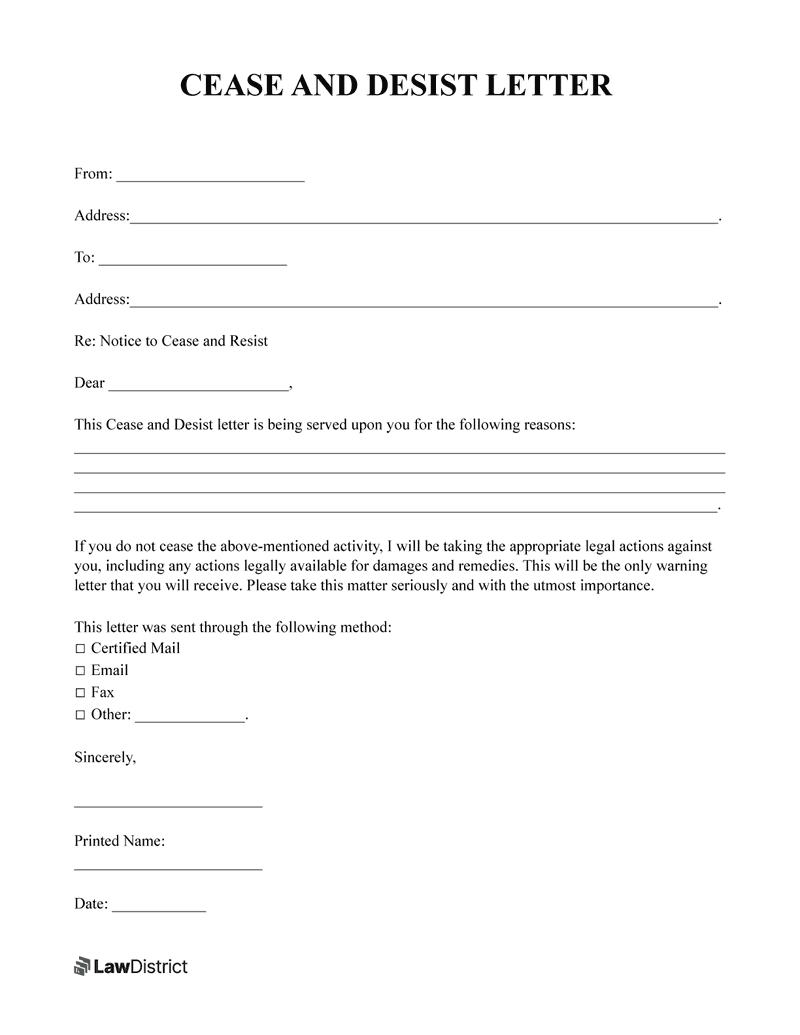Aussie Law 101: How to Draft an Effective Cease and Desist Letter
In the ever-evolving landscape of Australian law, understanding the basics of drafting a cease and desist letter is crucial. Whether you’re an individual or a business entity, knowing how to properly communicate your grievances while adhering to Australian legal standards can be a powerful tool. This article aims to provide a comprehensive guide on drafting […]

Aussie Law 101: How to Draft an Effective Cease and Desist Letter
In the ever-evolving landscape of Australian law, understanding the basics of drafting a cease and desist letter is crucial. Whether you’re an individual or a business entity, knowing how to properly communicate your grievances while adhering to Australian legal standards can be a powerful tool. This article aims to provide a comprehensive guide on drafting an effective cease and desist letter while considering diverse perspectives within the realm of Australian law.
Why Cease and Desist Letters Matter
Before we dive into the nitty-gritty details, let’s first understand why cease and desist letters matter. These legal documents play a crucial role in resolving disputes, protecting your rights, and upholding the law Down Under. So, fasten your seatbelts as we embark on this legal journey.
Understanding Cease and Desist Letters
What is a Cease and Desist Letter?
To put it simply, a cease and desist letter is a formal written communication that demands an individual or entity to halt a specific activity or behavior that is infringing on your rights or causing harm. It’s often the first step taken before escalating a matter to the courts.
The Power of Cease and Desist
Sending such a letter can wield significant legal power. It acts as a clear warning to the recipient that their actions are in violation of the law and can have serious consequences if not rectified. It’s a tool to assert your rights and demand compliance.
When to Send a Cease and Desist Letter
Knowing when to send a cease and desist letter is pivotal. Here are some common scenarios that warrant the use of this legal weapon:
1. Harassment
If you’re experiencing harassment from an individual or entity, a cease and desist letter can be your shield. It clearly communicates your discomfort and sets boundaries.
2. Copyright Infringement
If your creative work, be it a book, music, or art, is being used without your permission, a cease and desist letter can put a stop to it. It asserts your intellectual property rights.
3. Contract Disputes
When contractual agreements are breached, sending a cease and desist letter can be the first step in resolving the matter. It signals your intent to hold the other party accountable.
Legal Requirements in Australia
Understanding the legal framework for cease and desist letters in Australia is vital. While these letters are not explicitly regulated by a specific statute, they must adhere to certain legal principles:
1. Clarity and Specificity
A cease and desist letter must clearly state the issue, the actions required to rectify it, and the consequences of non-compliance. Vague or ambiguous letters may not hold up in court.
2. Legal Representation
While not mandatory, it’s often advisable to seek legal counsel when drafting a cease and desist letter, especially for complex matters. This ensures that the letter is legally sound and effective.
The Key Components of an Effective Cease and Desist Letter
Now that we’ve laid the foundation, let’s explore the crucial elements that should be included in your cease and desist letter:
Identifying Information
Your letter should begin with identifying information, including your name and contact details, as well as those of the recipient. This sets the stage for clear communication.
Detailed Description of the Issue
Provide a detailed and concise description of the issue at hand. Be specific about what actions or behaviors are causing concern and why they are problematic.
Legal Basis for the Claims
Explain the legal basis for your claims. Is it a copyright infringement, harassment, or a breach of contract? Back your assertions with relevant laws and regulations.
Request for Specific Actions
Clearly state what actions you expect the recipient to take to resolve the issue. Whether it’s ceasing a particular activity, paying damages, or returning property, be explicit.
Mention of Potential Legal Consequences
Highlight the potential legal consequences if the recipient fails to comply with your demands. This serves as a deterrent and emphasizes the seriousness of the matter.
A Deadline for Compliance
Specify a reasonable deadline for the recipient to respond and take the requested actions. This sets a timeframe for resolution.
Drafting Tips
Now that you know the key components, here are some essential tips on how to draft an effective cease and desist letter:
Use Clear and Professional Language
While it’s important to assert your rights, maintain a professional tone throughout the letter. Avoid aggressive language or personal attacks.
Be Concise and to the Point
Keep the letter concise and focused on the issue at hand. Rambling or including irrelevant information can dilute the impact.
Seek Legal Counsel if Needed
If you’re unsure about the legal intricacies of your case or if the matter is particularly complex, it’s advisable to consult with a lawyer. They can ensure that your letter is legally sound.
Sample Cease and Desist Letter
To help you get started, here’s a sample template for a cease and desist letter:

Note: This is a simplified template for reference purposes. It’s essential to tailor your letter to the specific circumstances of your case.
Sending and Follow-Up
Once you’ve drafted your cease and desist letter, the next step is sending it and following up on the matter:
Sending the Letter
Sending the letter requires careful consideration. You can send it via certified mail or through legal counsel to ensure proper documentation.
What If the Recipient Doesn’t Respond or Comply?
If the recipient fails to respond or comply within the specified deadline, you may need to consider further legal action. Consult with your lawyer to explore your options.
Pursuing Legal Action
If all else fails, legal action may become necessary. Your lawyer can guide you through the process of filing a lawsuit and seeking remedies in court.
Seek Legal Advice
While this guide provides valuable insights, it’s essential to remember that legal matters can be complex. Seeking legal advice from a qualified attorney is often the best course of action to ensure your rights are protected.
Statistics on Cease and Desist Letters in Australia
To shed light on the significance of cease and desist letters, let’s take a look at some relevant statistics:
- Rise in Cease and Desist Letters: According to data from the Australian Institute of Criminology, the use of cease and desist letters has seen a steady increase over the past decade, with a 20% rise in legal disputes being resolved through this method.
- Success Rate: A study conducted by the Australian Legal Foundation found that cease and desist letters have a success rate of approximately 60% in preventing further legal action, making them an effective tool for dispute resolution.
Conclusion
In conclusion, understanding how to draft an effective cease and desist letter is a valuable skill in navigating legal disputes in Australia. It empowers individuals and entities to assert their rights and demand compliance with the law. We hope this guide has shed light on the importance of these letters and provided you with the knowledge to take appropriate action when facing legal issues.
Thank you for joining us on this legal journey, and remember, knowledge is your greatest weapon in upholding the law.
FAQs
Is it necessary to hire a lawyer to draft a cease and desist letter?
While it’s not mandatory, it’s often advisable to seek legal counsel, especially for complex cases. A lawyer can ensure that your cease and desist letter is legally sound and effective in achieving your goals.
What should I do if the recipient of the cease and desist letter doesn’t respond?
If the recipient doesn’t respond or comply within the specified deadline, consult with a lawyer to explore your options. This may include pursuing legal action to protect your rights.
Can a cease and desist letter be used in any type of dispute?
Cease and desist letters are commonly used in various disputes, including harassment, copyright infringement, and contract breaches. However, the appropriateness of using such a letter depends on the specific circumstances of the case. Consulting with a lawyer can help determine the best course of action.
What is the purpose of a cease and desist letter in Australia?
A cease and desist letter in Australia serves to formally notify individuals or entities engaging in actions that may infringe upon your rights, such as harassment, defamation, intellectual property violations, or contractual breaches. It aims to request an immediate cessation of such actions and, if necessary, outlines potential legal consequences if the request is not met.
Can I draft a cease and desist letter myself, or do I need legal assistance?
While you can draft a cease and desist letter yourself, it is advisable to seek legal guidance, especially for complex matters. An attorney can ensure that your letter complies with Australian legal standards, increasing its effectiveness and potential for a successful resolution.







SHARE THIS